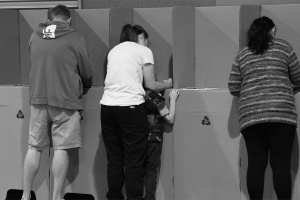By Abdulrahman al-Rashed
The Yemeni crisis involves several parties, but the major axes are the forces of isolated former President Ali Abdullah Saleh and the Houthis on one hand, and the Yemeni government – which now resides outside the country – and the Saudi-led alliance on the other. There is also Al-Qaeda.
Given these axes, the war may go on for months, perhaps years, unless the capabilities of Saleh and the Houthis are diminished. This must not only be done via military confrontation, but also by attracting most of the military and tribal powers, which Saleh dominated, to the government’s side.
The war is no longer limited to the capitals Sanaa and Aden, as there is now fighting in 10 of Yemen’s 21 governorates – half the country. In addition, the Houthis have opened a front against Saudi Arabia by shelling the latter’s border cities. This was expected from the start, as it is a tool of social and propaganda pressure against the kingdom.
Escalating the situation
Meanwhile, the Iranians and their allies are trying to escalate the situation via the media by intensifying coverage of events to the extent that the war has become the most covered affair. They think Yemen will be the swamp that will keep Saudi Arabia busy in relation to other hotspots in the Middle East.
There are also unremitting attempts to support the “Saleh-Houthi” camp by sending weapons and experienced fighters. These attempts, however, have so far failed due to the naval and aerial embargo.
The dispute can end either via a clear victory, which is almost impossible due to the presence of several parties, or by achieving enough victories to convince the opposing forces to negotiate. The latter is actually the major aim of the battle. The other scenario is for the war to last until all parties are exhausted but still maintain their gains, similar to Afghanistan.
The Houthi attack on border posts and their shelling of neighboring cities will not achieve the expanded invasion that they threaten. Geography is a major obstacle throughout the long border between the two countries, and the Houthis do not have the capability to fight and march for long northward toward southern Saudi Arabia.
Igniting fires
However, they can continue to ignite fires by shelling across the border and obstructing civilian life in neighboring Saudi areas. This, however, will not alter the political path of the battle.
The most important aspect of the war is not its intensity, but the disintegration of Yemeni domestic partisan and tribal alliances. There are efforts to convince the various tribes to break their alliance with Saleh and the Houthis and join the legitimate government, which is the guarantee to Yemen’s unity and independence.
This article was first published in Asharq al-Awsat on May 7, 2015.
____________________
Abdulrahman al-Rashed is a veteran and internationally acclaimed journalist, he is a former editor-in-chief of the London-based leading Arab daily Asharq al-Awsat, where he still regularly writes a political column.





